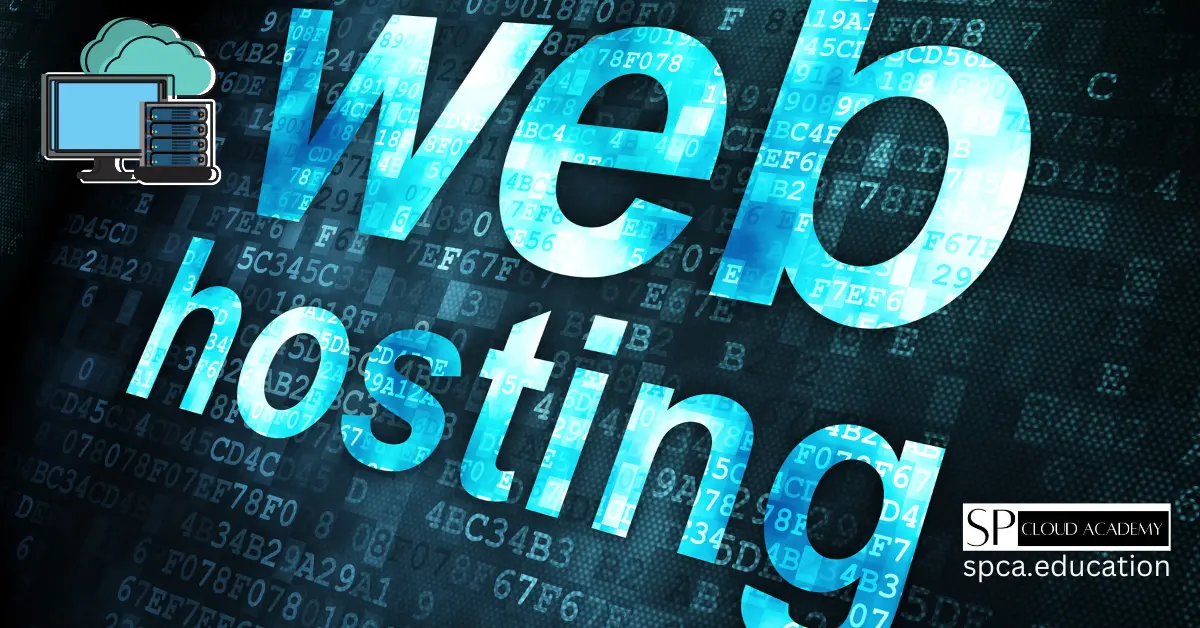Are you tired of relying on external web hosting services for your WordPress website? If so, it’s time to take control of your online presence by setting up a local hosting server on your own PC. With a step-by-step guide, you can easily navigate the process and ensure that your website runs smoothly and efficiently.
In this article, we will walk you through the process of setting up a local WordPress web hosting server. From installing the necessary software to configuring the server settings, we’ve got you covered. No technical jargon, just simple and straightforward instructions.
By hosting your website locally, you gain full control over its performance and security. Plus, it allows you to test and customize your website before going live. Whether you’re a tech enthusiast wanting to expand your knowledge or a business owner looking to save costs, setting up a local hosting server is a valuable skill to have.
Ready to take the reins of your website? Let’s get started with our step-by-step guide to setting up a local WordPress web hosting server on your PC.
Benefits of Setting Up a Local WordPress Web Hosting Server
Setting up a local WordPress web hosting server offers several benefits that make it worth considering. Firstly, it provides you with complete control over your website’s performance. With a local server, you can optimize the server settings to ensure fast loading times and a seamless user experience.
Secondly, hosting your website locally enhances security. By eliminating the need for a third-party hosting service, you reduce the risk of potential security breaches. You can implement robust security measures tailored to your specific needs, safeguarding your website and its data.
Thirdly, a local hosting server allows you to test and customize your website before making it live. You can experiment with different themes, plugins, and configurations without affecting the live version of your site. This flexibility ensures that your website is fully optimized and tailored to your requirements.
In addition to these benefits, setting up a local hosting server is cost-effective. You can save money by not having to subscribe to expensive hosting plans. Instead, you can utilize the resources of your own PC, making it an affordable option for individuals and small businesses.
Prerequisites for Setting Up a Local WordPress Web Hosting Server
Before diving into the setup process, there are a few prerequisites you need to fulfill. Firstly, ensure that your PC meets the minimum system requirements for hosting a local server. These requirements typically include a compatible operating system, sufficient RAM, and disk space.
Next, you’ll need to download and install XAMPP (X-Platform, Apache, MariaDB, PHP, and Perl) on your PC. XAMPP is a popular software stack that provides all the components required to run a local server. It includes Apache, which serves as the web server, MariaDB or MySQL for the database management system, and PHP for server-side scripting.
Once you have XAMPP installed, make sure your PC has a stable internet connection. This is important for downloading and installing WordPress, as well as accessing online resources during the setup process.
Now that you have the necessary prerequisites in place, let’s move on to installing and configuring XAMPP on your PC.
Installing and Configuring XAMPP on Your PC
Installing XAMPP is a straightforward process. Start by downloading the latest version of XAMPP from the official website. Once the download is complete, run the installer and follow the on-screen instructions.
During the installation, you’ll be prompted to select the components you want to install. Make sure to choose Apache, MariaDB or MySQL, and PHP. These components are essential for hosting a local WordPress server.
After the installation is complete, open XAMPP and start the Apache and MariaDB or MySQL services. These services will allow your local server to run and manage the database.
To configure XAMPP, you’ll need to modify a few settings. Open the httpd.conf file located in the xamppapacheconf directory. Look for the line that says Listen 80 and change it to Listen 8080. This step is necessary if you already have another application using port 80.
Next, open the php.ini file located in the xamppphp directory. Look for the line that says max_execution_time and change its value to 300. This will prevent any timeout issues when running WordPress.
Once you’ve made these configuration changes, save the files and restart the Apache service in XAMPP. Your local server is now up and running, ready for the installation of WordPress.
Downloading and Installing WordPress on Your Local Server
With XAMPP configured, it’s time to download and install WordPress on your local server. Start by visiting the official WordPress website and downloading the latest version of WordPress.
Once the download is complete, extract the WordPress folder and copy it to the htdocs directory in the XAMPP installation directory. The htdocs directory is the root directory for your local server.
Now, open your web browser and navigate to http://localhost:8080/wordpress. This will start the WordPress installation process.
Follow the on-screen instructions to set up your WordPress site. You’ll need to provide a database name, username, and password. Make sure to write down these details as you’ll need them later.
After completing the installation, you’ll be directed to the WordPress dashboard. Congratulations! You now have a local WordPress site up and running on your PC.
Configuring WordPress Settings for Local Hosting
Before you start customizing your website, there are a few WordPress settings you should configure for local hosting. Start by navigating to the “Settings” menu in the WordPress dashboard.
Under the “General” tab, update the “WordPress Address (URL)” and “Site Address (URL)” fields to http://localhost:8080/wordpress. This ensures that your website is accessible on your local server.
Next, navigate to the “Permalinks” menu and choose a permalink structure that suits your needs. Permalinks determine the structure of your website’s URLs. Selecting a meaningful and SEO-friendly permalink structure is important for optimizing your website for search engines.
Once you’ve configured these settings, your local WordPress site is ready for further customization and testing.
Creating a Database for Your Local WordPress Site
To ensure that your local WordPress site functions properly, you need to create a database. Start by opening a web browser and navigating to http://localhost:8080/phpmyadmin. This will open phpMyAdmin, a web-based interface for managing databases.
In phpMyAdmin, click on the “Databases” tab and enter a name for your database. Click on the “Create” button to create the database.
Now, navigate back to your WordPress dashboard and go to the “Tools” menu. Click on the “Export” option to export your existing WordPress site’s database. Save the exported database file to a convenient location on your PC.
Next, click on the “Import” option in the “Tools” menu. Select the database file you exported earlier and click on the “Go” button to import the database to your local server.
Congratulations! You have successfully created a database for your local WordPress site.
Importing Your Existing WordPress Site to the Local Server
If you already have an existing WordPress site hosted on a remote server, you can easily import it to your local server. Start by accessing the files of your remote WordPress site via FTP or a file manager provided by your hosting service.
Download all the files of your WordPress site to a convenient location on your PC. This includes the WordPress core files, theme files, plugin files, and any additional media files.
Next, locate the wp-content folder in the downloaded files. Copy the entire wp-content folder and replace the wp-content folder in your local WordPress installation directory.
Once the wp-content folder has been replaced, import the database of your remote WordPress site to your local server using the steps mentioned earlier.
With the files and database imported, your existing WordPress site is now available on your local server for testing and customization.
Testing and Troubleshooting Your Local WordPress Site
Now that your local WordPress site is set up, it’s time to test its functionality and troubleshoot any issues that may arise. Start by navigating to http://localhost:8080/wordpress in your web browser. Your WordPress site should load without any errors.
Explore your site and make sure all the pages, posts, and media files are functioning as expected. Test any functionality specific to your site, such as contact forms, e-commerce plugins, or custom features.
If you encounter any issues during testing, refer to the WordPress documentation or seek support from the WordPress community. There are numerous online resources and forums available where you can find solutions to common WordPress problems.
Remember to periodically backup your local WordPress site to avoid any data loss. You can use plugins or manual methods to create backups of your site’s files and database.
Conclusion and Next Steps
Congratulations on successfully setting up a local WordPress web hosting server on your PC! By hosting your website locally, you’ve gained full control over its performance, security, and customization options. You can now test and optimize your website before making it live.
In this article, we walked you through the step-by-step process of setting up a local hosting server. From installing XAMPP to configuring WordPress and importing your existing site, we covered all the necessary steps to get you started.
Now that you have a local WordPress server up and running, the next steps are to customize your website, add content, and optimize it for search engines. Explore the vast range of themes and plugins available to enhance your site’s design and functionality.
Remember to stay up to date with the latest WordPress updates and security measures. Regularly maintain and backup your local server to ensure a smooth and secure experience.
Enjoy the freedom and flexibility of hosting your WordPress website locally. Happy hosting!
FAQs
Setting up a local WordPress web hosting server on your PC is a common practice for developers and designers who want to test their websites or themes before deploying them to a live server. Here are some frequently asked questions (FAQs) and answers to help you with the process:
1. Why should I set up a local WordPress server?
- Setting up a local server allows you to develop and test your WordPress website offline.
- It provides a safe environment for experimenting with themes, plugins, and configurations without affecting your live site.
2. What software do I need to set up a local WordPress server?
- You can use software like XAMPP, MAMP, or WampServer, which include Apache, MySQL, and PHP – the necessary components for hosting a WordPress site.
3. How do I install XAMPP/MAMP/WampServer?
- Download the software from the respective official websites.
- Follow the installation instructions provided by the software.
- Start the server after installation.
4. How do I install WordPress on my local server?
- Download the latest version of WordPress from the official website.
- Extract the WordPress files into the ‘htdocs’ directory (for XAMPP/WampServer) or ‘htdocs’ in MAMP.
- Create a MySQL database using the server’s control panel.
- Run the WordPress installation by accessing
http://localhost/your-wordpress-directoryin your browser.
5. What are the default credentials for the WordPress local installation?
- During the installation, you will be prompted to create a new WordPress admin account with a username and password.
6. How do I access my local WordPress site?
- Open your web browser and go to
http://localhost/your-wordpress-directory.
7. Can I use a different directory name for my WordPress installation?
- Yes, you can use any directory name you prefer. Just make sure to update the URL accordingly during the installation process.
8. How can I back up my local WordPress site?
- You can manually copy the WordPress files and export the database using phpMyAdmin or a similar tool.
9. Can I import an existing WordPress site to my local server?
- Yes, you can import an existing site by copying the files and exporting/importing the database.
10. How do I troubleshoot common issues with local WordPress installations?
- Check the server logs for error messages.
- Ensure the necessary server services (Apache, MySQL) are running.
- Verify file and directory permissions.
- Ensure there are no conflicts with port numbers.
Setting up a local WordPress server is a valuable skill for web developers, as it allows for efficient development and testing workflows. Always refer to the documentation of the specific software you’re using for detailed instructions and troubleshooting tips.
See also
WordPress site administration and maintenance
-

Plesk vs. cPanel: Which One Really Wins for Web Hosting in 2025?
-

Mastering Website Performance: The Complete Guide to Google Search Console & Analytics
-

The Only Step-by-Step Guide You Need to Install & Configure cPanel on an Ubuntu VPS
-

WordPress on Subdomain vs. Subfolder: Pros, Cons & Best Choice Explained
-

Step-by-Step: Creating and Revoking Temporary WordPress Access
-

The Ultimate Cloud Hosting Handbook: Every Feature, Benefit, and Pitfall Explained
